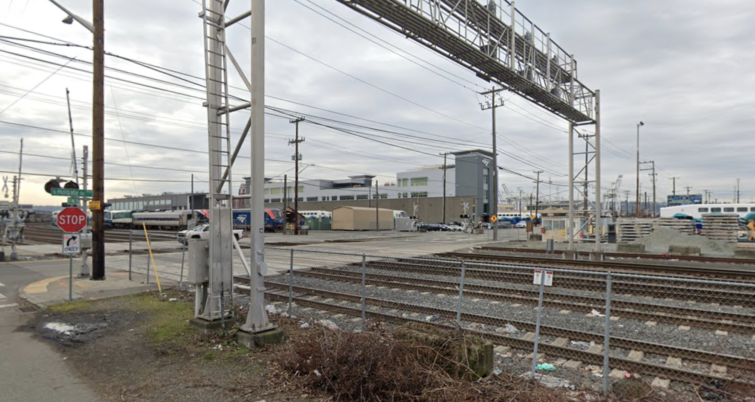Amtrak and BNSF Request Seattle to Close Part of South Holgate Street
Written by Jennifer McLawhorn, Managing Editor
SEATTLE – Amtrak and BNSF are requesting the city of Seattle to part with South Holgate Street so that both companies can enclose and barricade the area.
The Seattle Times reported both Amtrak and BNSF have requested that the area surrounding South Holgate Street, from Occidental Avenue South to Third Avenue South, be closed in order to add track, fences, a barricade, and a 900-foot-long maintenance shed. This would unite both sides of the yard. For BNSF, half of freight crosses South Holgate Street. One new track would replace “time-consuming wishbone movements by creating direct switches between the yards and the King Street Station mainline.”
Executive Director of the Sodo Business Improvement Area commented that “it’s the only active train yard in the country that’s bisected by a busy street.” According to a Washington Highway-Rail Grade Crossing State Action Plan from February 2022, the Holgate Street crossing ranks as no. 1 on its SAP Top 58 Priority Higher-Risk Crossings.
Instead of bisecting the yard, Chase Kitchen, a regional government affairs manager, said that “Amtrak would contribute money and engineering for a walk-bike bridge.” By closing down the current street that runs through the yard, it is understandable that there would be reduced crashes, slowdowns, and injuries.
In response, the Seattle DOT spokesperson stated that it does “not know the cost or feasibility, which is why we applied for the study funds.” The city previously denied the request to close the street back in 2010. However, after the opening of the Lander Street Bridge three years ago, the proposed closure became “plausible”.
Construction on the maintenance building south of Holgate is set to begin next year, paid for by part of the $3.1 billion national train-base and railcar purchase fund. During construction when South Holgate Street is closed, Amtrak “would complete a second phase of the maintenance structure and six tracks through the retired road.” Chase Kitchen went on to say that the “largest trains . . . can take 45 minutes to go back and up to the station. . . New rails over Holgate might cut that to 10 minutes.”
In response to the possibility that the South Holgate Street closure would impede coastal shipments, the Northwest Seaport Alliance sent a letter U.S. Transportation Secretary Pete Buttigieg endorsing a study. It says that the street “provides a relief valve for east-west traffic after major stadium events when routes like SR 519/Edgar Martinez way are shut down for post-game surges of exiting traffic.”
Another group that advocates for passengers endorses a closure of the street. Co-executive Director of All Aboard Washington, Charlie Hamilton, commented that one is “only a few minutes from King Street Station. You feel like you’re almost there. They get on the PA and say, ‘We’re stopping.’ There’s traffic, or a truck that has blocked the intersection. That happens.” Hamilton also stated that Amtrak could reduce its run time for this area, “because it won’t need to factor in delays.”
Last year, the transit board endorsed a traffic overpass for Holgate Street for a light rail project for Ballard-to-downtown slated for the late 2030s. Because of this future construction, there may be reduced car and bus lanes if a Union Station transit hub is built. This construction “would require crews to dismantle and replace a six-lane Fourth Avenue South viaduct.”





